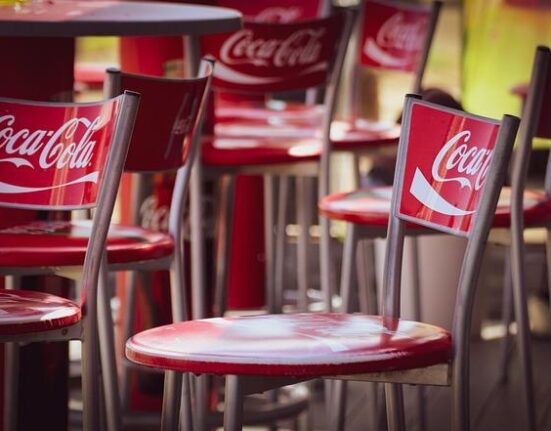In a world where aspirational marketing adn exclusivity reign supreme,luxury labels have become synonymous with status and success. But as the allure of high-end brands continues to captivate consumers, a crucial question emerges: are these luxury labels truly worth the investment, or are they simply a reflection of societal pressures? In this article, we will delve into the intricate world of luxury goods, deconstructing their value across various categories—from fashion and accessories to automobiles and experiences. By analyzing craftsmanship, brand heritage, and consumer perception, we aim to illuminate the frequently enough-blurred line between genuine worth and perceived prestige. Join us as we unpack the complexities of luxury, challenging the notion that a higher price tag always equates to greater value.
The Allure of Prestige: Understanding the emotional Appeal of Luxury Brands
The attraction to luxury brands often goes beyond the mere possession of high-quality goods; it taps into a deeper emotional reservoir that resonates with individual experiences and aspirations. Many consumers find themselves drawn to the exclusivity, craftsmanship, and heritage that luxury brands symbolize. These products serve not just as functional items but as means to convey a certain social status and identity. The feeling of being part of an elite group, associated with luxurious lifestyles, can create a powerful allure that transcends the product itself, making the emotional connection stronger than the financial one.
Moreover, the narrative surrounding luxury brands plays a pivotal role in their appeal. The stories of artisans, traditions, and meticulous attention to detail paint a romantic picture of ownership that many find irresistible. this leads to a sense of belonging to a world characterized by sophistication and taste. Ultimately, the intrinsic value attributed to these brands is often a fusion of perception and reality, where psychological drivers such as self-esteem, validation, and the desire for uniqueness heavily influence consumer behavior. In a world where the battle for differentiation is fierce,luxury brands provide an escapism that is hard to resist,inviting individuals to indulge in a lifestyle that makes them feel special.

Quality vs. Price: Analyzing Material Value across Categories
When delving into the complex relationship between quality and price, it’s essential to assess how material value shifts across different categories. Luxury brands often position themselves with a premium price tag, which implies a guaranteed level of quality. Though, this is not always the case. as a notable example, materials like cashmere or genuine leather command a higher price due to their durability and superior feel, but many mid-tier brands also offer remarkable alternatives that provide similar quality without the hefty markup. This begs the question: are consumers paying a premium solely for the label, or are they truly receiving enhanced value?
To create a clearer picture, consider the following breakdown of typical luxury versus mid-range items across several categories.The comparison highlights where luxury brands may offer little in terms of added value relative to their significant price increase:
| Category | Luxury Brand Price | Mid-Range Equivalent Price | Material Quality |
|---|---|---|---|
| Handbags | $1,500 | $400 | Genuine leather vs. high-quality synthetic |
| Watches | $5,000 | $1,200 | Swiss movement vs. reliable quartz |
| Footwear | $800 | $150 | Premium leather vs. quality fabric |
This analysis reveals that while certain luxury items do indeed boast superior craftsmanship, many consumers might find that the perceived prestige of owning high-end labels doesn’t always align with real-world durability or functionality. As shoppers become more discerning and educated about the materials and craftsmanship behind their purchases, the conversation around value continues to evolve.Ultimately, the distinction between true quality and mere branding becomes increasingly important for conscious consumers seeking to spend wisely.

Sustainability and Ethics: The Hidden Costs of Luxury Labeling
The allure of luxury labels often masks a deeper narrative rooted in sustainability and ethics. Behind the glamour of high-end brands lies a complex web of production practices that frequently contribute to environmental degradation and exploitative labor conditions.Sustainable sourcing and ethical manufacturing are not always at the forefront of these luxury houses, as many prioritize profit over responsible practices. Consumers are increasingly faced with the dilemma of choosing products that align with their values while grappling with the societal implications of indulging in exclusive brands.
Delving into the hidden costs associated with luxury products reveals a stark contrast between perceived value and actual impact.For instance, the industry is notorious for high carbon footprints, excessive waste, and the often-overlooked treatment of workers. Consider this breakdown of key factors:
| Factor | Impact |
|---|---|
| manufacturing Practices | High environmental costs due to resource-intensive processes |
| Labor Conditions | Risk of exploitation and poor working conditions in supply chains |
| Material Sourcing | Deforestation and biodiversity loss for rare materials |
| Waste generation | Significant waste from unsold products and packaging |
Ultimately, the opulence of luxury labels often conceals these ethical and environmental issues, raising critical questions about whether the status they confer is worth the undisclosed costs they impose on society and the planet. As consumers evolve, it is imperative to demand clarity and accountability from luxury brands, ensuring that future purchases reflect not only personal taste but also a commitment to sustainability and ethics.

Practical Investments: When Luxury Pays Off and When It Falls Short
Investing in luxury products often hinges on the dual notions of prestige and quality. While high-end brands like Chanel, Gucci, and Louis Vuitton can sometimes offer exceptional craftsmanship, the practical investment value varies significantly across categories. For instance, luxury fashion can appreciate over time, especially if the pieces are limited edition or part of a highly sought-after collection. However, fast fashion alternatives can quickly negate the resale value of a $2,000 handbag if market trends shift or consumer interest wanes. This disparity emphasizes the importance of conducting thorough market research before committing to high-ticket items.
On the flip side, certain luxury investments demonstrate a clearer path to long-term value retention. Think about fine art, watch collections, or even luxury real estate—these sectors tend to offer substantial returns over time, often outperforming traditional assets. A well-curated watch collection, such as, can yield impressive gains, with brands like Rolex and Patek Philippe consistently appreciating over years. conversely,areas such as luxury electronics often fall short; gadgets depreciate rapidly,undermining their initial investment appeal. Thus, understanding the nuances of luxury spending can mean the difference between a sound investment and simply paying for a label.
| Category | Luxury Brand Example | Investment Potential |
|---|---|---|
| Fashion | Chanel | Variable, dependent on trends |
| Art | Damien Hirst | Strong recognition |
| Watches | Rolex | Excellent appreciation |
| Electronics | Apple | Rapid depreciation |
In Conclusion
In the world of fashion, where trends ebb and flow as quickly as the tides, the allure of luxury labels presents a tantalizing conundrum. As we’ve explored the intricate layers of value across various categories—from craftsmanship and heritage to marketing prowess and exclusivity—it becomes apparent that the perception of luxury is as subjective as personal style itself.
While some may argue that the prestige of a high-end label is worth the investment, others may find that the essence of true luxury lies not in the price tag but in authenticity, quality, and personal significance. Ultimately, the question of whether luxury labels are overrated is not one with a definitive answer; rather, it invites us to reflect on what we value most in our fashion choices.
As consumers, we hold the power to define our worth, to discern quality from embellishment, and to curate wardrobes that resonate with our individual stories. The next time you contemplate a luxury purchase, remember: it’s not just about what’s trending or the label on the tag; it’s about the value you derive and the narrative you choose to embrace. Whether you choose to invest in a luxury item or seek out choice expressions of style, the ultimate goal remains the same: wearing what makes you feel truly exceptional.








Leave feedback about this